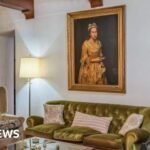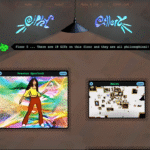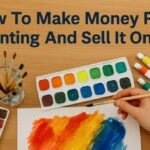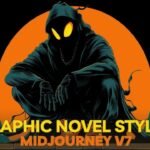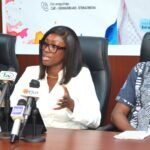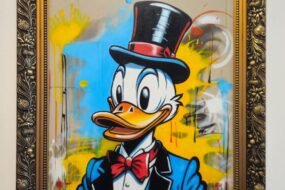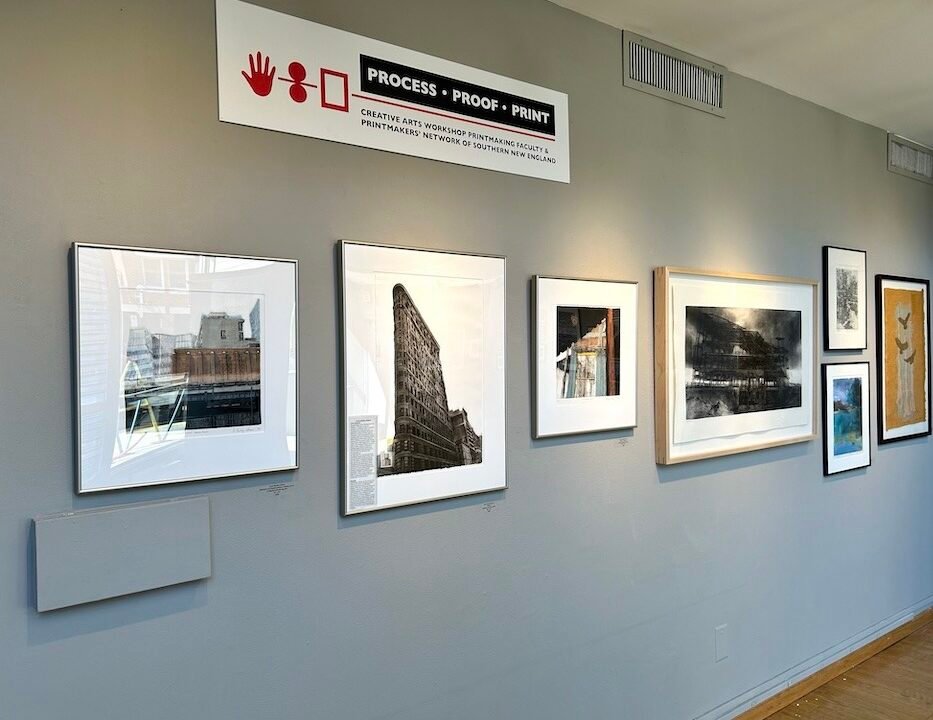

Photos courtesy of Creative Arts Workshop. Process • Proof • Print runs at CAW, 80 Audubon St. in New Haven, through Sept. 28.
The walls of Creative Arts Workshop are bursting into color this month. On one, a perfect circle splits into gradients of yellow and orange, with flecks and squiggles of red and blue behind it. On another, white-capped waves crash into the rocks above them, turning ink and paper into a narrative over several sheets. Another, and New York’s flatiron building rises against the sky, as if it is thrusting its chest out into the street.
Welcome to Process • Proof • Print, a collaboration from Creative Arts Workshop and the Printmakers’ Network of Southern New England (PNSNE) that runs through Sept. 28 of this year. Installed in CAW’s gallery spaces, the exhibition provides a rare window into the printmaking process, educating viewers who may not be familiar with the breadth and depth of printmaking today. It was coordinated by printmaker Margot Rocklen, a founding member of PNSNE and printmaking instructor at CAW, and Maura Galante, head of CAW’s printmaking program and full-time art teacher at Betsy Ross Arts Magnet School.
“Printmaking is like watching a child be born,” said featured artist and workshop instructor, Shaunda Holloway, who has two monotypes in the show. “You can’t get that in any other art.”
And indeed, the show reveals that the process of printmaking—itself extensive and multi-modal— is totally unique and unlike any other visual art practice. In painting, drawing, or sculpture, the artist can see a piece developing as they go. For printmakers, that’s often not the case—they get a sense of the final and full piece only after setting, inking, and printing a piece.
That’s especially true when an artist is working with something referred to as relief printing and “negative space,” which many of these artists are. In the exhibition, the 29 featured artists explore the range of printmaking styles, including relief, intaglio, silkscreen, monoprint, collagraph, photo transfer, and lithography. Learn more about those here and here.
For Holloway, this aspect of printmaking is quite freeing: it enables the artist to discover their voice instead of trying to perfect every detail throughout their creative process. She credited Rocklen, who she sees as a mentor, with giving her the space to experiment and grow as a printmaker, including recent experiments with monotype and etching on fabric.


Photos by Grayce Howe (top) and Creative Arts Workshop (bottom). Process • Proof • Print runs at CAW, 80 Audubon St. in New Haven, through Sept. 28.
“There were so many different people to collaborate in this show [and] that was a big deal,” she said. “They have been dedicated to printmaking on the collective level, so that’s a great thing to be associated with, a group that has been consistent about this craft.”
She added that her favorite part about leading workshops and teaching at CAW is learning from the students she’s working with. Each of them helps her develop her craft as she helps them develop theirs, she said. While she’s been printmaking since the 1990s, her work and process is constantly evolving.
Like Holloway, workshop leader and featured artist Elena Grossman praised the creative minds of developing print artists, adding that her favorite part of getting to teach printmaking is establishing a deeper level of human connection through the process. Grossman, whose teaching work has ranged from SCSU to Penn State University, currently teaches at Central Connecticut State University.
“Art is just an excuse to have conversations with people,” Grossman said. “Art is like talking—rather than going through your mouth, it goes through your hand.”
Grossman explained that this has the ability to connect people on a deeper level that words and conversation alone. She sees that in the show, which brings a body of contemporary prints to an audience that may be unfamiliar with the style.“I just hope this is the start of something,” she said. “I hope this brings more print art to New Haven.”
Throughout Process • Proof • Print, many of the artists capture aspects of nature, environment, and sustainability. Grossman spoke on the importance of using materials that are accessible and help the reduction of waste within the art community.
“I’ve done more of using what’s there and finding stuff outside,” Grossman said, pointing to the importance of using recycled materials or materials that are already around in the construction of art (this is known in artmaking circles as “bricolage,” she explained). She added that it’s important and easy for developed print artists to use as many recycled materials as possible, which is a common theme for the artists featured in the show.
The practice of bricolage is very, and perhaps uniquely, prominent in the print-art community, Grossman continued. It’s “a playful way to deal with depressing things that can sometimes appear in the art process.”

A self-portrait by Grossman (left) and Soul Surviving and Roots Roots by Holloway (right). Grayce Howe Photos.
Similarly, Holloway reflected on how unique printmaking is, and how much freedom and forgiveness it can bring to its practicing artists. “It’s a very forgiving art form,” she said.
Like Grossman, she believes in as much use of environment-friendly materials as possible, adding that it’s important as artists that they think about their carbon footprint. In her own work, she uses materials ranging from bamboo rods, various fabrics, and cork, with the understanding that materials are part of what makes each piece unique.
“Normally when you see print art you’re not always made aware of what the print maker’s process is,” she said. “So that definitely creates a uniqueness.”
Grayce Howe was the Arts Paper’s 2024 New Haven Academy intern and is now in her senior year. The New Haven Academy internship is a program for NHA juniors that pairs them with a professional in a field that is interesting to them. Grayce plans to continue writing for the Arts Paper throughout her senior year!

